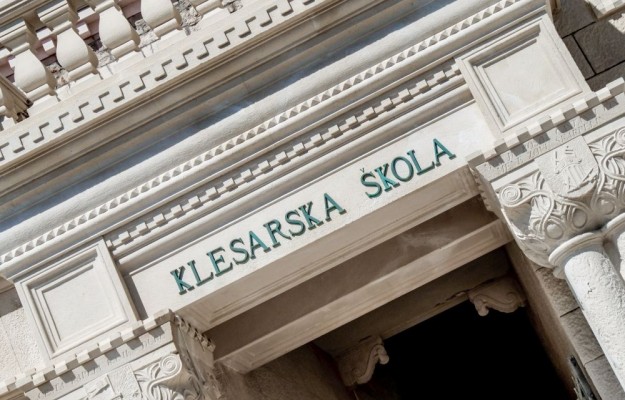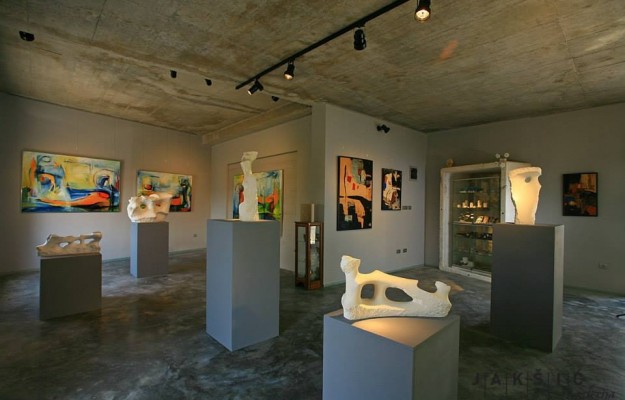Island Brač, Attractions and sights
Blaca desert is a natural monument unique not only on Brač but also on the entire Croatian coast. It is considered a desert because of the scarcety of nature in this area. Its beginning was a stone-rebuilt cave - the first shelter of priests from Poljica. Along the steep cliff, deserted hermitages paved the church and monastery, residential and commercial buildings, and transformed the vast forests into rich vineyards and olive groves. Blaca desert, which was also an astronomical observatory, is a natural and cultural phenomenon, as well as a valuable monument to human work and persistence. The road to Blaca is a dirt path of 2 kilometers and it is intended only for walkers.The inventory of the museum includes a valuable astronomical collection of the last desert. This is one of the most visited museums on the island.

.jpg)
.jpg)
The largest part of Vidova Gora extends over the area of Nerežišća and its height of 778 meters makes Brač the highest island. This is a true paradise for hunters and hikers, herbalists, adventurers. It is an attractive vantage point from which there is a view on all sides of the island of Brač and the indented coast of the island of Hvar, and sometimes even Italy. Just a little imagination and you can shoot the best selfie. For those in love Vidova gora is often an ideal place to say fateful "yes".

(2).jpg)
(1).jpg)
The Museum of Olive oil presents the history of olive growing on the island as well as the entire traditional olive oil production process, all the traditional tools used for transport, production and storage of olive oil. There is also a taster in the museum with homemade island delicacies such as olive pate, jams, cheese, domestic olive oil and wine.
(3).jpg)
.jpg)
.jpg)
Pučišća has long been known for its stonemasonry tradition, which continues to theses days in Stonemasonry school, the only one in Croatia and in this part of Europe. Founded in 1909, it is open to visitors and it is especially worthwhile to see a workshop with students' works when visiting with school masters. This school has given many famous sculptors and stone-cutters whose works can be seen in workshops and galleries throughout the island and beyond.



Mirje is a place dating back to the late antique from 6. century and is located on a beautiful hill with a breathtaking view of Brač Channel. These ruins in the middle of green vineyards are the remains of Benedictine monastery along with religious and commercial buildings. In the evening, the special atmosphere creates a sunset while its rear trails overflow the sea and trickle through the cracks of the wall creating an immeasurable image.



Museum of island Brač, founded in 1979, is located in Škrip andhoused in Radojkovic Tower from the 16th century and shows a cross section of island's history and cultural heritage. Among the numerous monuments of construction and sculpture are Herculean figures, located in Mir and the outflow of the Povlja threshold, and an interesting collection of photographs, weapons and documents from the Second World War. In the lower part of the museum is a Roman mausoleum, famous for the legend that the wife and daughter of Emperor Diocletian were buried here.






The impressive monumental neo-Romanesque parish church of Christ the King, 45 m high, dominates the village of Selca and because of its grandeur the islanders call it Brač Cathedral. It was built in the middle of the 20th century and the central figure is a statue of the Heart of Jesus, the work of the famous Croatian sculptor Ivan Meštrović. A monument to Pope John Paul II has been placed near the Church of Christ the King in life size.



Near Sutivan, in the heart of the pine forest, is an area of about 12000 m2 and is called Nature park, and divided into several zones; walk-in area, playgrounds, animal shelter, restaurant, children's playground. Various animals can be seen there, and besides a lot of fun on the playground and trampoline, children can ride ponies, ride a small cable car and try playing alka.



In the center of village Nerežišća is the church of St. Peter and Paul, and because of its pine tree on the roof, called the Bonsai of Brač, is one of the most interesting attractions on the island of Brač and a protected monument of nature. Not far from Nerežišća you will be surprised by the huge rock of a very unusual appearance that resembles a cake, so it is not surprising that the locals called it Koloč. An urban legend says it fulfills wishes! At the top of the Great Valley, at the place where the river once flowed, there is a bridge from the time of Austrian administration and the locals like to call it the bridge of Fraz Joseph.





















.jpg)
.jpg)
.jpg)
.jpg)



.jpg)
















